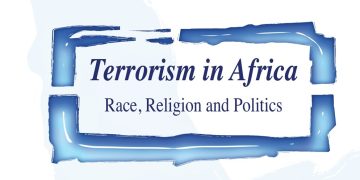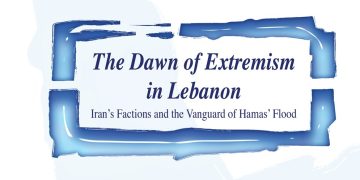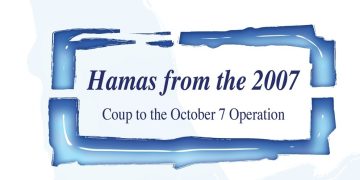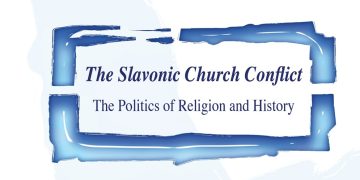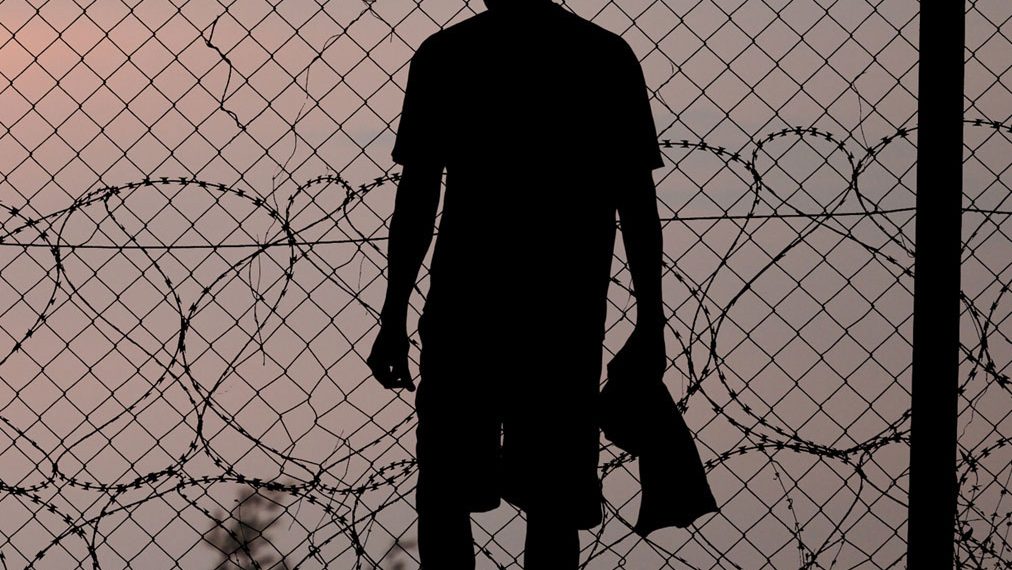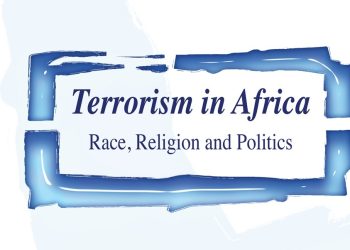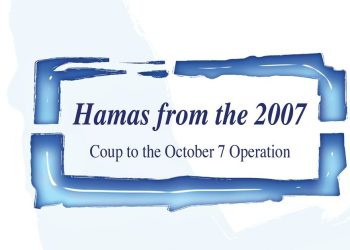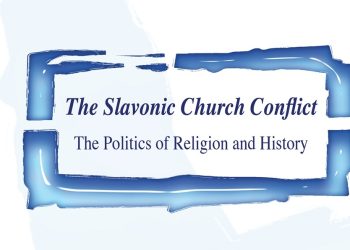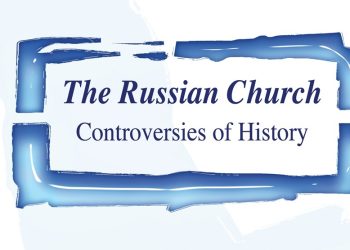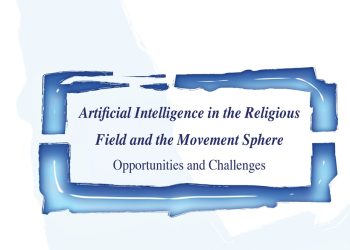In just the past week two major incidents of domestic terrorism have occurred in the United States, one deadly and one, thank God, not. I refer of course to the murder of 11 Jews worshipping in their synagogue in Pittsburgh on the morning of October 27, and just a few days before the sending of pipe bombs—all duds, as it happened—to prominent Democratic Party personalities. What do these incidents have in common, and what do they mean, not just for the United States, but for all those people and nations abroad who look to the United States for security, inspiration, or both?
The first thing these incidents have in common is that they are only the latest in what has become a long string of domestic terrorism—many having to do with schoolchildren and others more overtly political, such as the deadly mayhem in Charlottesville, Virginia in the summer of 2017. Every so often an incident of U.S. domestic terrorism involves Muslims in one way or another—remember Fort Hood, San Bernardino, Orlando, and the Boston Marathon, for examples—but over the past few years most have not. And while many incidents predate the political rise of Donald Trump, a decided uptick has descended ince his campaign, election victory, and inauguration. The uptick has mostly clustered around expressions of extreme bigotry and xenophobia—against African-Americans; immigrants the President has accused, in his Inaugural Address no less, of being responsible for “carnage”; and now Jews.
After the two incidents of this past week, both perpetrated by the classical loner personality that all experts in terrorism warn about—Cesar Sayoc and Robert Bowers being the latest cases out of a great many—both Donald Trump from the White House and Vice President Mike Pence offered standard-issue condemnations and garden-variety condolences. Neither mentioned any need for more rigorous gun control—relevant in the Bowers case—and Trump even blamed the synagogue in Pittsburgh for not having hired an armed guard for protection. Neither termed either event an episode of domestic terrorism, although it is impossible to accurately characterize them in any other way.
Worse, adding mightily to the Orwellian aura coming out of Washington, Pence declared that extremist and shrill political rhetoric cannot be blamed in the slightest for an atmosphere that abets political violence. “Everyone has their own style, and frankly, people on both sides of the aisle use strong language about our political differences,” Pence told NBC News Saturday. “But I just don’t think you can connect it to acts or threats of violence.”
It is true, as Pence said, that both sides engage in the use of strong language. It is unhelpful, for example, when Hollywood celebrities like Robert De Niro fling profanities in public venues toward the President of the United States, as he did at the Tony Awards ceremony this past June. Overheated language like that is counterproductive, for it baits Trump’s line and shows his base how radical and out-of-control the Left is. It helps the White House and the base, each in their own way, present all opposition to Trump as radical, ad hominem, and disrespectful of the office. Yes, lots of people like to quote “fight fire with fire,” but of course the fire department wisely chooses to use water.
Still, De Niro is just a private citizen; Trump and Pence are the only two elected members of the Executive Branch of the U.S. Government. Do they really think, and hope to convince anyone, that they should not be held to a higher standard of conduct commensurate with the responsibilities of their offices? There is no equivalence, moral or otherwise, to be had here between senior elected officials and emotionally aroused critics.
Besides which Pence’s claim beggars belief, and flies in the face of all we know from social psychology. If he really believes what he said then he is shockingly stupid; if he doesn’t really believe it, but finds it convenient to obfuscate the connection between speech and behavior, then he’s a liar. Of course evil and violent speech predicts to evil and violent behavior; it always has, and it always will: Wherever there is the smoke of baseless hatred there is the fire of mad violence.
Maybe Pence can’t (or won’t) connect the dots, but others have not had great difficulty doing so. One observer aptly noted that for about three years now Trump has been yelling “fire” in a crowded theater, alluding to the famous 1919 Schenck v. United States case involving Justice Oliver Wendell Holmes, Jr. that established the reasonable limits of First Amendment rights.[1] So for Donald Trump to complain about the proliferation of hatred—“It’s a terrible, terrible thing what’s going on with hate in our country, frankly, and all over the world,” he said—is like a farmer complaining about his crop setting fruit, for Trump’s modus operandi as a political entrepreneur is the sowing and harvesting of hate.
The “yelling fire in a crowded theater” metaphor is correct as a decription of Trump’s rhetorical style, and it did not take a rocket scientist to see it coming long ago. Back on March 14, 2016—long before Donald Trump captured the Republican nomination for President—I warned, anticipating the whole “fake news” phenomenon as well, that:
Trump is . . . a political shaman. He is adroit at social magic, stirring emotion and changing anything he likes into anything else he likes. And his followers, hypnotized by the dramatic world of colliding forces that he enchants in simple schematic form, nod in agreement, not with his logic but with his demonic magic.
Donald Trump is therefore not just about the Republican Party’s nomination for President, and he is not even just about the presidential election. He is a harbinger, a warning, of a very deep strain of irrationality rising within the American body politic. He is, too, an incubator of potentially significant political violence. He has organized no para-military organization of course, but every time he threatens to punch someone in the nose he is, in effect, giving permission for his followers to be transgressive, not to exclude being violently so.[2]
Many did not agree with my predictions of violence in March 2016, despite its already rising tide. Let’s review that rising tide, noting carefully that the atmosphere of radical intolerance predates Trump and, indeed, was a major contextual element in his political success.
We may begin our selective review by noting the first overtly racist mass murder in recent times: Dylann Roof’s killing of nine black congregants in a Charleston, South Carolina church in 2015. That was followed in the summer of 2016 by the assassination of five police officers in Dallas by a black activist. So yes, the violence, the terrorism, goes both ways to some extent. Then, after Trump’s inauguration, in May 2017 a Montana congressional candidate physically attacked a reporter—a sign of the times. On June 14 a group of Republican congressmen at a baseball practice in Alexandria, Virginia was attacked and several were wounded by gunfire. Again there was violence from both sides, each presumably feeding the other. In between all these episodes were several sundry campus riots against right-wing speakers, and clashes between leftists and neo-Nazis on the streets of Sacramento, California and elsewhere—all culminating in the August 12, 2017 disaster of Charlottesville. If that were not enough, then, on October 1, came the murder of 58 people in Las Vegas, for reasons no one has been able to determine—terrorism without a rationale, terrorism just because.
All of this violence has accumulated to the point where it has become normed in people’s expectations. And remember: Terrorism does not do its main damage by producing body counts, but rather by undermining the social trust that keeps communities engaged, united, and optimistic.[3] The U.S. Government has foolishly helped the terrorists in the years since 2001 by bureaucratizing paranoia; by reminding Americans of the prospect of mass murder several times a day with “if you see something, say something” announcements broadcast in public places, we have eaten away at the fabric of implicitly expected normalcy on which social trust ultimately depends. When just getting on a subway car or a bus pulls a cognitive load, however routinized, something is badly amiss.
Therefore, at times like this, after two new terror episodes in a single week, leadership’s role, were it responsible leadership, would be to heal divisions and counsel virtue at all levels. Trump and the Republicans instead stoke divisions, the better to harvest them politically in future.
Even after Charlottesville there were denials; still people refused to see, or at least to admit, any connection between the manifest proliferation of violent language and violent behavior, and refused to understand what first the Trump campaign and then the Trump White House was doing very deliberately. I don’t see how anyone can reasonably continue in denial about political violence in the United States, and its manipulation by the Trump White House and its supporters, after this past week.
What About the Jews?
The Pittsburgh synagogue attack was the most deadly attack ever on American Jews. It follows an upward tick in anti-Semitic incidents over the past two years, although the doyen of the data is frankly not to be trusted. The Anti-Defamation League of B’nai Brith, for all the good it has done in its illustrious history, is in the business of finding anti-Semitism. That is its only remaining raison d’être, and that is how it fundraises. For many years it has been exaggerating anti-Semitism, just as an organization like CAIR (Council on American-Islamic Relations) exaggerates incidents of so-called Islamophobia—and for precisely the same reasons.
All that said, it would defy all reason to deny that anti-Semitic incidents are more prevalent today in the United States than they were, say, in 2009, when the Bernard Madoff Ponzi-scheme story broke. The Madoff affair was a perfect storm for expectations of rising anti-Semitism: it was Jewish through and through; it was deeply and perversely crooked; it involved finance; and all those involved “looked” Jewish (or Mediterranean, or Arab/Middle Eastern…..most Anglos can’t tell the difference, especially in a polyglot place like New York City). And nothing happened. Nothing. Not so much as a scintilla of anti-Semitism could be detected arising from it.
Compare that resounding nothing to the ceaseless recent attacks by Republicans on George Soros, which are clearly dog whistles for anti-Semitism. In the wake of Saturday’s synagogue attack the head of the Republican Congressional Campaign Committee refused to disavow a campaign ad linking a Democratic candidate to George Soros, one of those who received a pipe bomb in the mail last week. The ad, released on October 18 and targeting Democrat Dan Feehan (who is running against Republican Jim Hagedorn to represent Minnesota’s 1st Congressional District), features a montage with Colin Kaepernick kneeling and warnings of “left-wing mobs paid to riot in the street,” followed by an image of Soros with stacks of bills. It repeats a classic anti-Semitic trope: “Billionaire George Soros bankrolls the resistance.”
This is not a one-off. Republican congressman Matt Gaetz of Florida recently claimed without evidence that Soros had funded the migrant “caravan” from Honduras; maybe he got that from a October 25 episode of Fox Business Channel’s Lou Dobbs Tonight, when Chris Farrell of Judicial Watch claimed—again without an evidence—that the caravan had been funded and directed by “the Soros-occupied State Department.”
There is more. House Majority Leader Kevin McCarthy said in a tweet last week, later deleted after the synagogue attack: “We cannot allow Soros, Steyer and Bloomberg to BUY this election.” All three men mentioned are Jews.
And more: Earlier this month, during protests against now-Supreme Court Justice Brett Kavanaugh, Trump tweeted without evidence that the people protesting Kavanaugh were “paid for by Soros and others.” Rudy Giuliani retweeted a tweet referring to Soros as “the anti-Christ” in a conspiracy also suggesting that Soros was paying the Kavanaugh protesters.
The prize for sheer audacity, however, analogizing Soros to Hitler, probably belongs to Texas Rep. Louie Gohmert, who suggested that Soros controls Democratic Party politics. He said in a Fox News appearance, “They might as well raise their forearm and raise their hands and yell ‘heil Soros.’”
But Arizona Rep. Paul Gosar wins the prize for conspiratorial insanity. He suggested in a Vice News interview that Soros might have been behind the August 2017 white nationalist rally in Charlottesville. “Wouldn’t it be interesting to find out,” he said when asked if he thought Soros funded the neo-Nazis that marched in Charlottesville. This is of a piece, for example, with rabid haters of Israel claiming that the Israeli government, not the Syrian regime, attacked rebel Syrians, mostly civilians, with massive doses of poison gas back in 2013. This kind of conspiracy mongering featuring a flipped big lie, when it penetrates normal discourse deeply enough, is a signal that something deranging is going on in the culture. It is an unerring predictor of violence.
The point is that, thanks in part to the toxic echo chambers of social media, which reward shock-value statements with almighty “hits,” it has now become, as ADL chairman Jonathan Greenblatt correctly noted, “normal and permissible to talk about Jewish conspiracies manipulating events, or Jewish financiers somehow controlling activities.” And again, anyone who is surprised by this, or thinks that Donald Trump bears no responsibility for this dramatic shift, simply has not been paying attention—or else has a bad memory.
So, then, let’s remember that during the campaign Trump joked at a meeting of the Republican Jewish Coalition that it wouldn’t support him “because I don’t want your money.” A campaign tweet about Hillary Clinton superimposed a Star of David over dollar bills. When in April 2016 Julia Ioffe published a critical essay in Gentleman’s Quarterly about Melania Trump, the alt-right deluged her with anti-Semitic insults and imagery, culminating in death threats such as an image of a Jew being shot execution-style or people ordering coffins in her name. When Trump was given a chance to condemn these attacks by his supporters, he said, “I don’t have a message” for them.[4] And then, of course, Trump said that the white-supremacist marchers in Charlottesville carrying a swastika flag included some “fine people.”
Direction by Indirection
Despite having a (converted) Jewish daughter and three Jewish grandchildren, Donald Trump has been an equal-opportunity sower and reaper of xenophobia and bigotry. Whatever he himself may think or believe, he has clearly absorbed an entire department store inventory of negative stereotypes and is not above unleashing his supporters to activate their bigotry on his political behalf. One is reminded of a classic scene from the 1964 film Becket, based on supposedly true events from the year 1170, where King Henry II gives direction by indirection, saying in the hearing of his court, “Will no one rid me of this meddlesome priest?”
No, Trump didn’t order the Star of David etched in over a pile of cash, nor did he tell anyone to send pipe bombs to people he regularly criticizes on Twitter, or order another deranged loner to tweet that a caravan of Hondurans moving toward America’s southern border is financed by George Soros before he attacked a synagogue congregation. He doesn’t need to; he just has to establish the tone and look the other way. Others will get rid of the meddlesome political opponents, immigrants, and Jews. When on October 23 in Texas Trump declared himself to be a “nationalist,” a label that can mean a dozen things depending on context, alt-right listeners heard that he was finally admitting publicly to being one of them. They are reportedly thrilled and newly mobilized. When they perpetrate more violence, Trump will look the other way, and privately smile.
So we now have a serious uptick in domestic terrorism in the United States abetted by a dark cloud of toxic politically rhetoric orchestrated in part by the President of the United States himself. While shocking, this too should not be surprising. After all, when Trump congratulated Matteo Salvini of Italy’s Northern League party and other members of Italy’s new far-right government this past June, he clearly aimed to harm the European Union. Using the third-rail issue of immigration, Trump sought to divide Europeans both within individual countries as well as within the EU as a whole. In short, his policy direction was indistinguishable from that of Vladimir Putin’s Russia.[5]
What lessons, and what warnings, should old friends and allies of the United States abroad take from all this? The first is that, at least for the time being, America has changed. It no longer operates with a moral compass and it is no longer a reliable ally, except accidentally—when interests temporarily coincide.
Will America change back, recover its vocation and common sense, when Trump is gone? Maybe; but things cannot go back to precisely the way they were. There were problems, there were elite pretensions and bad faith, and Trump has shaken the cage very hard indeed. For all anyone knows, too, a backlash against Trump and what he represents could veer far in the other direction, toward forms of utopian madness not themselves bereft of inclinations to violence. We just don’t know. Once a political order becomes infested with violence, expectations of more violence make that violence more likely. It begets a downward spiral that is hard to escape before the body politic face plants. Who is going to interrupt that spiral, and how?
Dr. Adam Garfinkle is currently Editor Emeritus of The American Interest.
[1] Gabriel Schoenfeld, “Yelling fire in a heavily armed theater: That’s what Donald Trump has been doing for three years now,” New York Daily News, October 27, 2018.
[2] Garfinkle, “On the Trumpenproletariat,” The American Interest, March 14, 2016. Emphasis in the original.
[3] I discuss the possible sources of social trust depletion in the United States in “In Way Too Little We Trust,” TAI Online, December 13, 2017.
[4] See Julia Ioffe, “How much responsibility does Trump bear for the synagogue shooting in Pittsburgh?” Washington Post, October 28, 2018.
[5] See my “Terror and Fear,” European Eye on Radicalization, June 25, 2018, also posted as “National Insecurity: Terror and Fear,” The American Interest Online, July 17, 2018.


